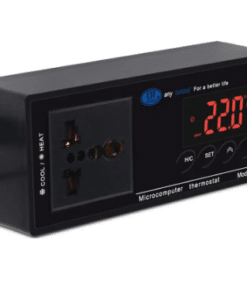A thermostat is a device that regulates the temperature of a system by automatically switching on and off heating or cooling systems. It senses the current temperature and compares it to a set point temperature. If the current temperature is too high or too low, the thermostat activates the heating or cooling system to bring the temperature back to the desired level.
Types of Thermostats:
-
Mechanical Thermostats:
- Use a bimetallic strip that expands and contracts with temperature changes, triggering a switch.
- Simple and reliable but less precise.
-
Programmable Thermostats:
- Allow you to set different temperature schedules for different times of the day.
- Can help save energy by automatically adjusting the temperature based on your lifestyle.
-
Smart Thermostats:
- Connect to Wi-Fi and can be controlled remotely using a smartphone or other devices.
- Often have advanced features like geo-fencing, voice control, and energy-saving algorithms.
Common Applications of Thermostats:
- Home Heating and Cooling Systems: Regulating indoor temperature.
- Water Heaters: Maintaining water temperature.
- Refrigerators and Freezers: Keeping food at optimal temperatures.
- Industrial Processes: Controlling temperature in various manufacturing processes.
By using thermostats, we can optimize energy consumption, improve comfort, and maintain precise temperature control in various applications.





